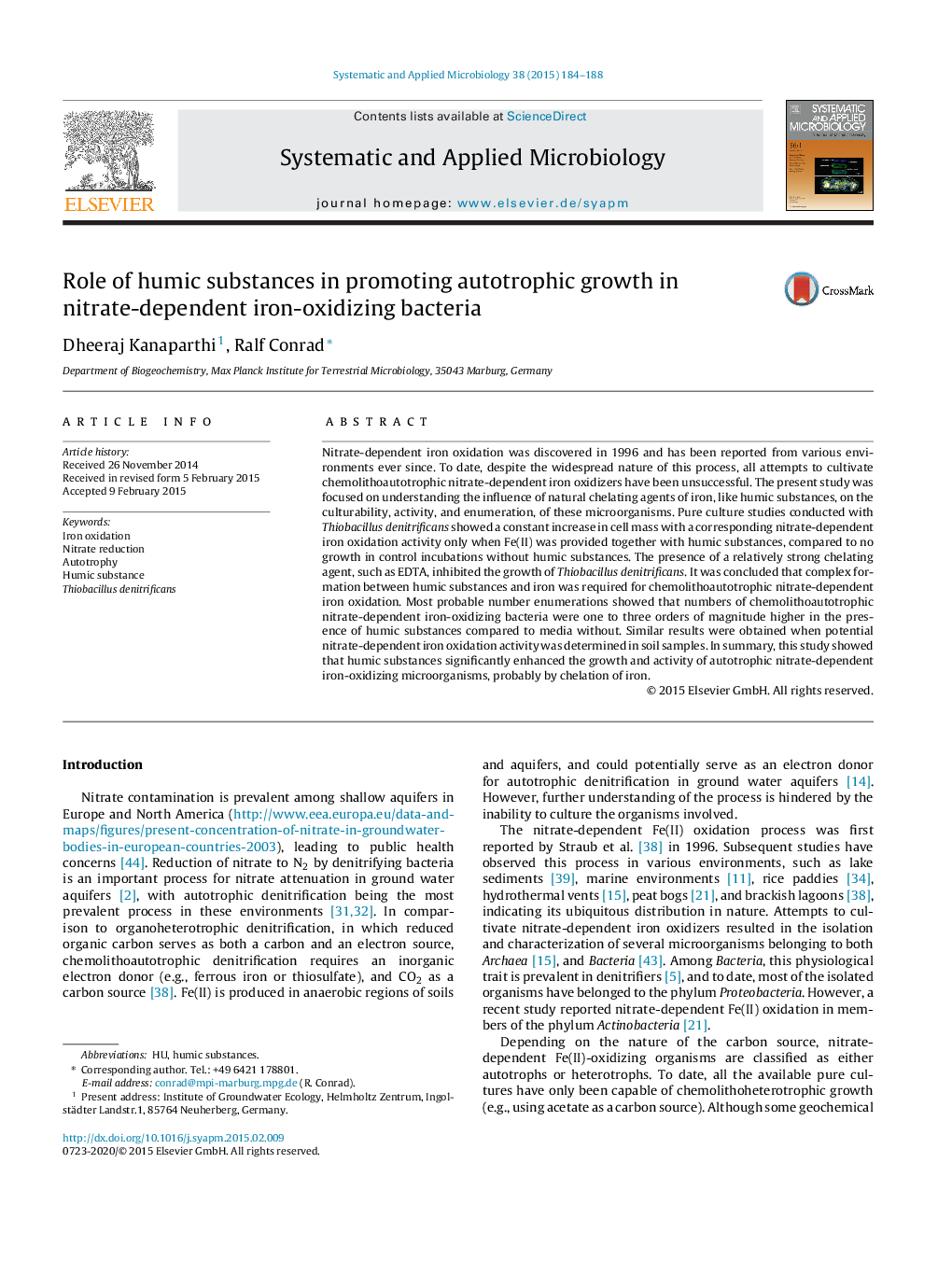| Article ID | Journal | Published Year | Pages | File Type |
|---|---|---|---|---|
| 2062994 | Systematic and Applied Microbiology | 2015 | 5 Pages |
Nitrate-dependent iron oxidation was discovered in 1996 and has been reported from various environments ever since. To date, despite the widespread nature of this process, all attempts to cultivate chemolithoautotrophic nitrate-dependent iron oxidizers have been unsuccessful. The present study was focused on understanding the influence of natural chelating agents of iron, like humic substances, on the culturability, activity, and enumeration, of these microorganisms. Pure culture studies conducted with Thiobacillus denitrificans showed a constant increase in cell mass with a corresponding nitrate-dependent iron oxidation activity only when Fe(II) was provided together with humic substances, compared to no growth in control incubations without humic substances. The presence of a relatively strong chelating agent, such as EDTA, inhibited the growth of Thiobacillus denitrificans. It was concluded that complex formation between humic substances and iron was required for chemolithoautotrophic nitrate-dependent iron oxidation. Most probable number enumerations showed that numbers of chemolithoautotrophic nitrate-dependent iron-oxidizing bacteria were one to three orders of magnitude higher in the presence of humic substances compared to media without. Similar results were obtained when potential nitrate-dependent iron oxidation activity was determined in soil samples. In summary, this study showed that humic substances significantly enhanced the growth and activity of autotrophic nitrate-dependent iron-oxidizing microorganisms, probably by chelation of iron.
